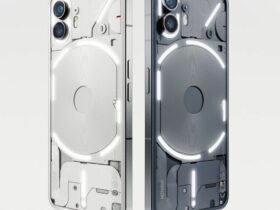3D printed blood vessels are a revolutionary breakthrough in tissue engineering. This innovative technique uses ice as a temporary support to print complex bio-ink structures. Then opening the way for the development of more sophisticated and functional organs in the lab.
Building Functional Vascular Networks
One of the major challenges in tissue engineering is building complex and functional vascular networks. These networks are essential for providing oxygen and nutrients throughout the organ, and without them, lab-grown organs cannot survive.
A precise and flexible 3D printing technique
offers an innovative solution to overcome this challenge. Scientists have developed a 3D printing technique that utilizes bio-ink made of endothelial cells, the cells lining blood vessels. This technique precisely prints the bio-ink into complex 3D structures using a mold made of ice.
Here are the steps involved in 3D printing blood vessels with ice:
- Bio-ink Creation: Scientists create bio-ink by mixing endothelial cells with biocompatible materials.
- 3D Printing Process: The 3D printer prints the bio-ink into a 3D structure using a mold made of ice.
- Ice Melts Away: After printing, the ice mold melts away, leaving behind a hollow blood vessel network.
- Tissue Maturation: The blood vessel network is then incubate and culture to develop into a mature structure.
Key Advantages of 3D Printed Blood Vessels:
- High-Precision Creation: This technique allows for the creation of complex blood vessel structures with high precision, mimicking the geometry and architecture of natural blood vessels.
- Flexible Mold Design: The ice mold can be modify to create different shapes and sizes of blood vessels. Then customized to the specific needs of the organ being grown.
- Compatible with Various Cells: The bio-ink used is compatible with various cell types, enabling the creation of personalized blood vessel networks for individual patients.
Great Potential in Various Fields:
- Boosting Organ Survival: Functional vascular networks are crucial for keeping lab-grown organs alive. 3D printed blood vessels can improve organ survival and viability, making them more suitable for transplants.
- Creating Accurate Disease Models: 3D printed blood vessels can be use to develop more precise disease models, aiding scientists in studying disease mechanisms and developing more effective therapies.
- Developing New Treatments: They can be leverage to develop new treatments for cardiovascular diseases and other conditions, such as stroke and atherosclerosis.
Challenges and Further Development:
- Scaling Up Production: Currently, the 3D printing technique can only create small blood vessel networks. Research efforts are underway to develop methods for scaling up production, enabling the creation of larger and more complex vascular structures.
- Enhancing Functionality: 3D printed blood vessel networks need to be functionalize to mimic the performance of natural blood vessels. Scientists are actively developing more sophisticated bio-inks and printing techniques to improve the ability of these vascular networks to deliver oxygen and nutrients.
- Ensuring Safety: This technique requires thorough testing to guarantee its safety before being use in patient transplantation. Rigorous clinical trials are needed to assess the potential risks and side effects of its use.
Paving the Way for a Promising Future:
3D printed blood vessels represent a revolutionary breakthrough in tissue engineering. This technique has the potential to overcome major challenges in this field and open the way for the development of more sophisticated organs and therapies. With continued research and development, this technique can have a significant impact on the future of medicine and improve the quality of life for patients worldwide.






